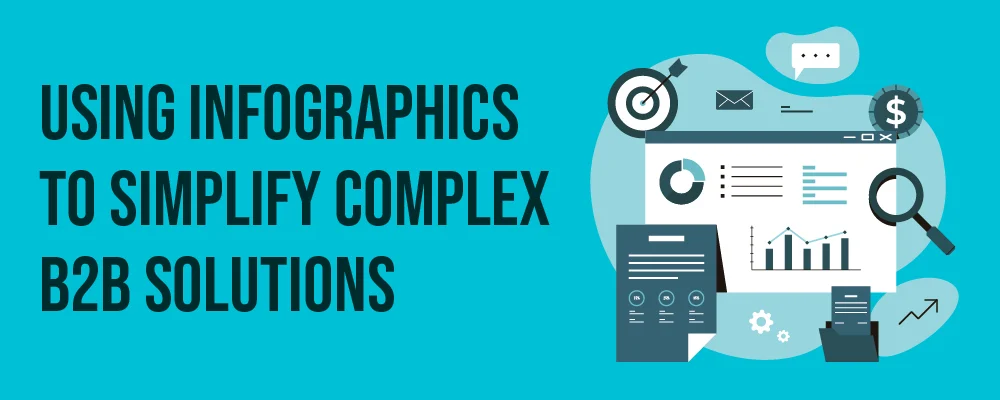
Table of Contents
In the fast-paced world of B2B marketing, communicating complex information effectively is crucial for engaging and informing your audience. Infographics have emerged as a powerful tool for simplifying intricate products, services, and processes, making them easier to understand and more engaging. This comprehensive guide will walk you through the process of creating effective infographics for B2B presentations, focusing on best practices for data visualisation, colour choice, and layout design tailored to the needs and expectations of B2B decision-makers.
Analysing and Planning Your Infographic
When creating an infographic, it’s essential to choose topics that are both complex and relevant to B2B decision-makers. For example, you might focus on topics like transformation management in the Enterprise Service Bus (ESB) domain or the implementation of a new software system.
Gather all relevant information and structure it in a coherent manner. Create a rough sketch to define the structure of your infographic, highlighting the key facts and ensuring that the most important information stands out. This step is crucial in organising your content and visual elements effectively.
Visual Language and Visualisation
Use the appropriate diagram type for each type of data. For instance, use bar charts for comparative data and line graphs for trends. This ensures that the data is presented in the most understandable and engaging way possible.
Select a consistent and clear colour palette. Use contrasting colours to highlight important information, avoiding too many shades and dark backgrounds. This enhances the visual appeal and readability of your infographic.
Place data in the foreground and keep text concise and to the point. Ensure good readability by using simple symbols and avoiding clutter. The layout should guide the viewer’s eye through the infographic logically and efficiently.

Storytelling and Step-by-Step Guides
Use infographics to tell a story that resonates with your B2B audience. Explain how complex knowledge or product features generate value. For example, you could illustrate the history of your company or industry, highlighting key events and their impact on current products or services.
Create step-by-step guides to explain complex processes or product applications. Use interactive elements and images to support the explanation. This approach is particularly helpful for training purposes, as it breaks down each step of the process into visually understandable components.
PowerPoint Design Services
We tailor each presentation to your specific needs, ensuring that it aligns with your brand identity and resonates with your target audience.
Data Visualisation and Tips
Ensure that the data is clear and easily recognisable. Use statistics and numbers to reinforce your message. This helps in making the infographic data-driven and informative, which is particularly valuable in B2B communications where facts are paramount.
Include helpful tips or tricks that assist users in applying their skills and knowledge to specific tasks. For instance, converting a blog post on five tips to increase organic traffic into an infographic can be highly beneficial. This adds an extra layer of value to your infographic, making it more engaging and practical.

Finalising and Distributing Your Infographic
Ensure that the infographic is complete and well-organised. Check the information for accuracy and completeness. Make any necessary adjustments to ensure that the final product is polished and effective.
Use share buttons and backlinks to distribute the infographic across various channels, increasing its visibility. This can include sharing on social media platforms, embedding on your website, or including in email newsletters.
Practical Example: Case Study
Create an infographic that illustrates the efficiency gains achieved by implementing a new ESB system in a company. Use numbers and graphs to visualize process improvements and cost savings. This type of infographic can demonstrate how a complex solution simplifies business processes and provides tangible benefits.

Conclusion
By following this guide, marketing professionals can create effective infographics that simplify complex B2B solutions, highlighting key details without losing important information. This approach enhances the communication of your message, builds brand authority, and helps in generating leads and moving them through the sales funnel.




